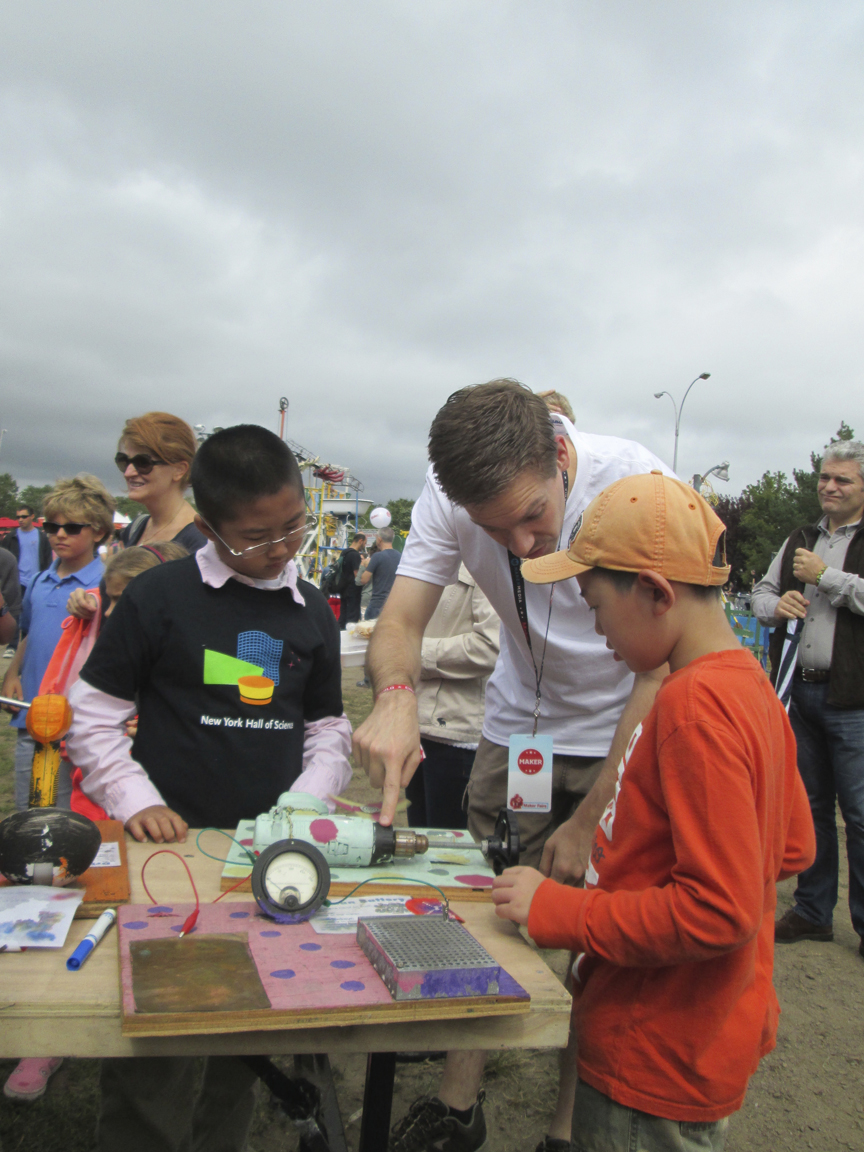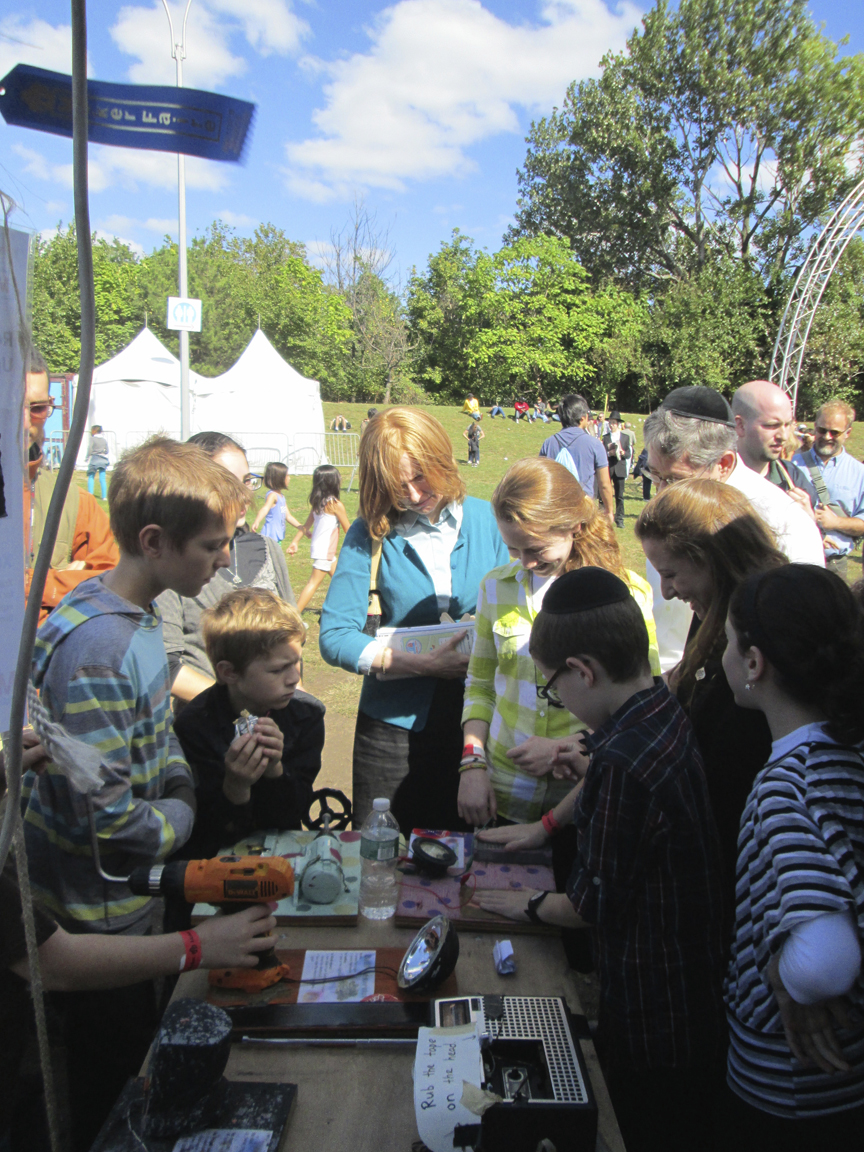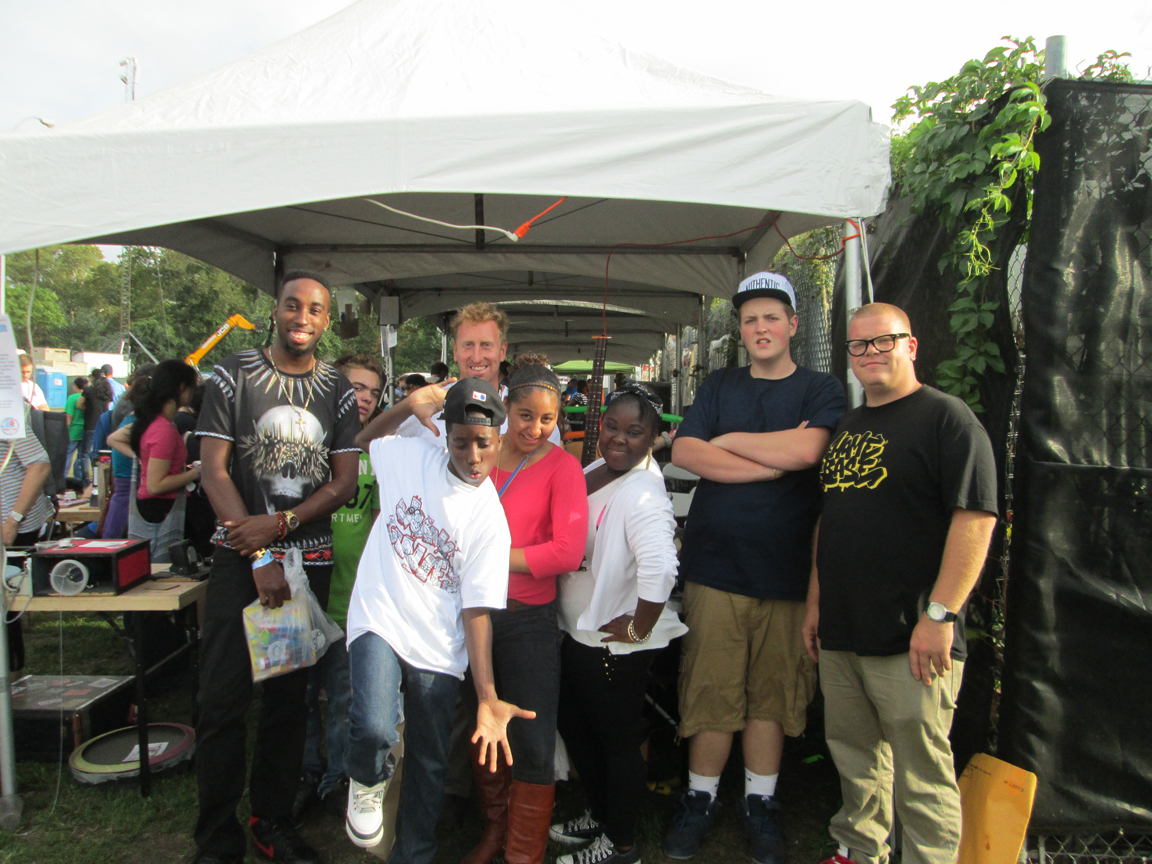Goals of the project
7-10th grade students work with Cornell student volunteers to repurpose unwanted household items--creating exhibits literally out of junk--to allow the public to directly engage with otherwise unfamiliar physics phenomena. Recycled electromechanical devices, such blenders, VCR’s and hair-blow dryers serve as the basis for a project-based learning experience for making physics exhibits. Facilitating a learning environment of true inquiry allows students the freedom to build their own projects, not projects prescribed by adults. Rapid prototyping becomes a formal skill-building exercise, and students quickly learn how frustrating real life experimentation and engineering can be. Students of all ages benefit from these workbench encounters to build intuition and to gain practical knowledge.
Some students attend the two-day annual Maker Faire In NYC to demonstrate their creations and describe the building process to visitors. The upcycled exhibits creatively demonstrate a range of science concepts, but many of the exhibits are about the science done here at Cornell. Through this experience, students gain an understanding of physics concepts and acquire real-world marketable skills. These types of exhibits have a "multiplier-effect"--not only providing an in-depth experience for the individual who designs and creates the exhibits, but impacting thousands more when on display.
Nature of the Collaboration
Xraise, the Outreach program at CLASSE worked in collaboration with the Greater Ithaca Activities Center (GIAC), a multicultural center dedicated to providing educational and recreational programs for youth. The Ithaca Physics Bus, a local non-profit whose goal is to share the beauty and joy of physics with the public through demonstrations and science experiments, played a key role in supporting this initiative by energizing volunteers and securing a space at the NYC Maker Faire. With the help of Cornell affiliated undergraduate and graduate students, the team worked with the GIAC JunkGenies afterschool program and affiliated summer camp to develop over 20 exhibits over the past two years.
Skills
Rapid prototyping, designing, trouble-shooting, problem-solving, communication, teamwork, building, measuring, creative thinking, research, age-appropriate construction skills, time management. The development of these skills were all motivated by the necessity to create something for the public that showcases a physical phenomenon.
Tools
Multimeter, Glue gun, Screwdriver, Scroll Saw, Wrench, Pliers, Wire Stripper, Wire Cutter, Paint Brush, Scissors.
Process
First we found a collaborator at a community center with an afterschool program. Together we established a plan-of-action and set a goal for an exhibition date when student projects would be ready. At the first meeting, we showed students pictures and video of exhibits at science centers. We searched through a pile of discarded appliances, and/or identified appliances we would need to scavenge for, in order to reproduce the same physical phenomena that science center exhibits showcase. For instance: ionization of gas is shown with small neon bulbs in a microwave, the Bernoulli/Coanda effect is demonstrated with a hair blowdryer and a balloon, resonant modes of a vibrating string is illustrated with a jigsaw and an elastic band. Participants presented their projects at Ithaca’s Sciencenter, the Greater Ithaca Activity Center, and the NYC Maker Faire.
Milestones
There were many defining moments—things that participants had not ever seen or done before. Most of the students had never been exposed to the inner workings of appliances, some had never hooked up a circuit to make a motor spin, and many were unfamiliar with common hand tools. A major milestone was when students would inevitably hit a roadblock, suffer through it until a solution was found, and then revel in their success when their project finally worked. Eventually exhibits were completed, but the biggest milestone was when the team took great pride in presenting their work in public.
Challenges encountered
Students are not used to struggling through a solitary problem—human versus machine. In this project, there is no grade given. Someone with special wisdom does not tell them it’s right or wrong. Instead, either it works or it doesn’t. If it doesn’t, it looks like he or she still has to learn more in order to understand how the pieces fit together into a system. The desire to get something to work is highly motivational. The process taught us that kids are underprepared for real-world challenges when those challenges don’t come with a roadmap. When students are presented with challenges that push them beyond their comfort zone, they can become disengaged or withdrawn. Drawing them back into the project by providing them with manageable steps and the scaffolding necessary to increase their confidence and encourage independence is a constant component of this work. These types of projects help students increase their resilience and determination.
Major outcomes
Over two years into the JunkGenies project, already thousands of people have benefitted. The project yielded middle-schoolers who now identify as scientists and engineers, it yielded an arsenal of high-engagement exhibits that make physics familiar and accessible.
Innovations, impact and successes
This project offers middle-schoolers an opportunity to be creative while getting exposure to science and engineering. It impacts the community by offering exhibits that demonstrate unusual phenomena. The project’s success is demonstrated by the increase in requests for involvement in our exhibit-building program and increase in requests for groups to experience the exhibition.
 Erik Herman
Erik Herman
 Rahmel Mack
Rahmel Mack
 Lora K. HIne
Lora K. HIne



